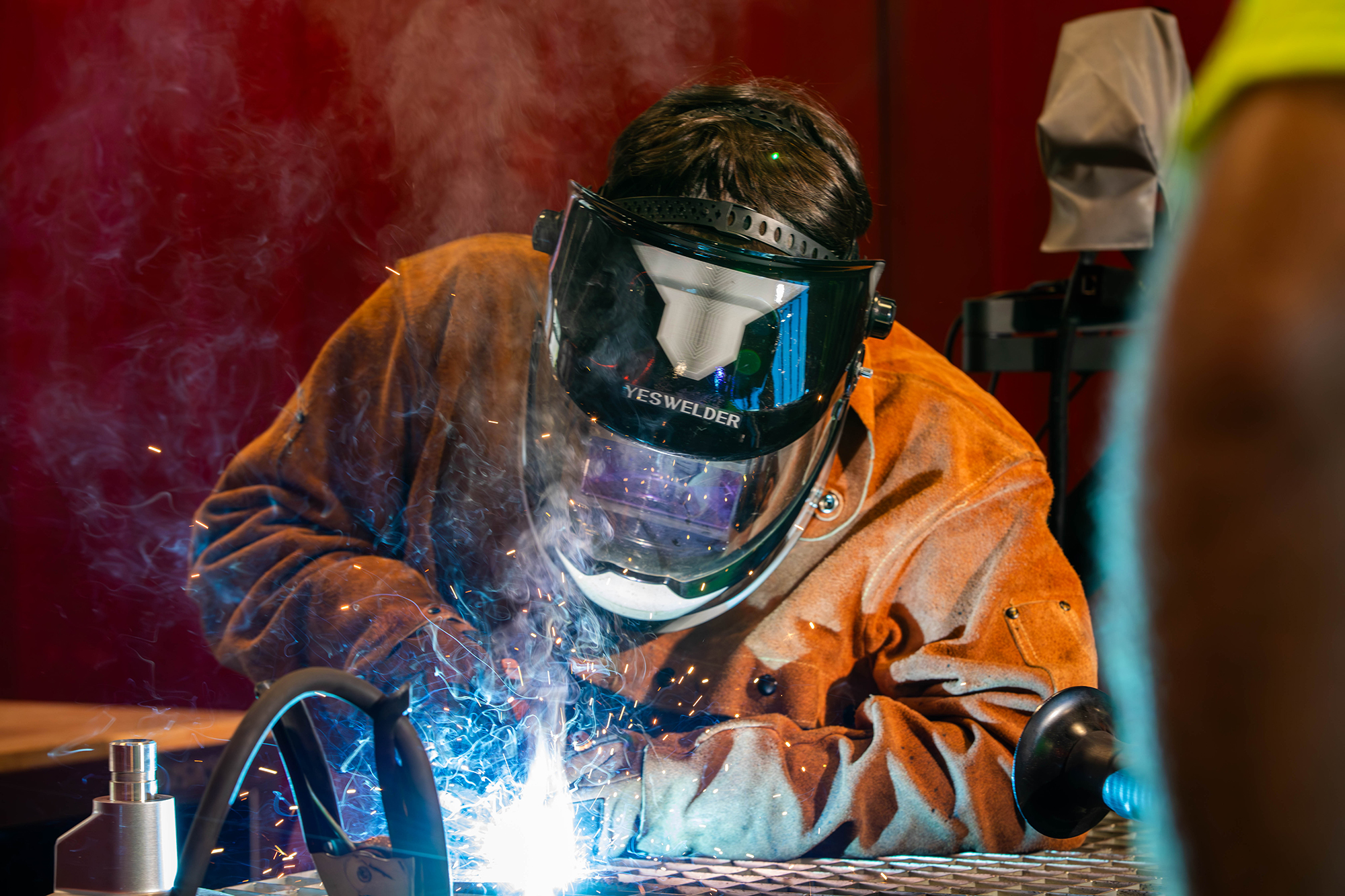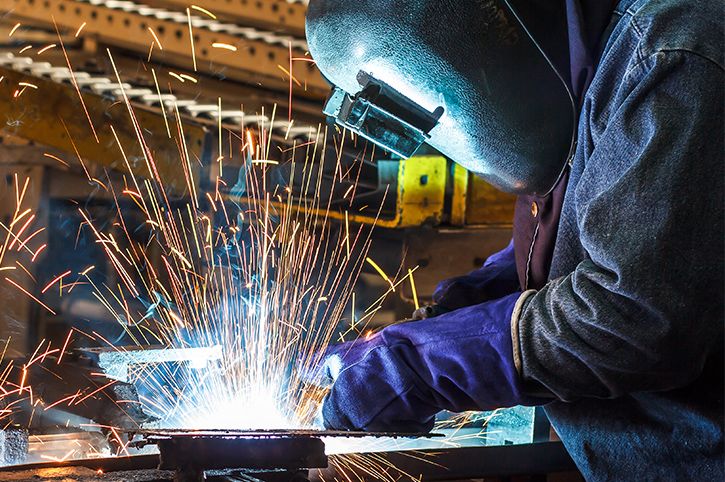All Regarding Welding: Key Insights Into Techniques and Best Practices for Success
Welding encompasses a variety of techniques, each fit for particular materials and applications. Comprehending these techniques, such as GMAW, SMAW, and TIG, is vital for attaining perfect results. Additionally, the ideal tools and safety methods can not be overlooked. As prep work and troubleshooting play critical functions in the welding procedure, grasping these elements can substantially boost the high quality of the end product. What are the key elements that guarantee an effective weld?
Recognizing Different Welding Methods
Welding methods encompass a range of techniques, each fit to details applications and products. Amongst the most typical methods are Gas Metal Arc Welding (GMAW), Secured Steel Arc Welding (SMAW), and Tungsten Inert Gas Welding (TIG) GMAW, additionally called MIG welding, is popular for its speed and convenience, making it perfect for slim materials. SMAW, or stick welding, is favored for its simplicity and performance in exterior atmospheres, particularly with thicker metals. TIG welding uses precision and control, making it appropriate for detailed job and non-ferrous metals (Montana Mobile Welding and Repair Fabrication). Each technique has its special benefits and considerations, allowing welders to select the most effective method based on the job's needs, product kind, and desired outcomes. Comprehending these strategies is crucial for effective welding
Important Welding Devices and Devices
While different welding strategies require certain skills, the right devices and tools are similarly important for achieving quality results. Important welding tools consists of welding equipments, which differ relying on the strategy-- such as MIG, TIG, or stick welding. Safety equipment, consisting of headgears, aprons, and gloves, warranties safety and security and convenience during the procedure. Additionally, clamps and components aid secure products in place, making sure accuracy in welds. Consumables like welding rods, cord, and protecting gas are likewise vital elements that affect the quality of the weld. Furthermore, devices such as cutters and grinders assist in surface area preparation and post-weld finishing, adding to a specialist outcome. Buying premium tools inevitably boosts the effectiveness and effectiveness of welding tasks.
Security Practices in Welding
Appropriate safety methods are vital in the welding market to protect workers from possible hazards. Welders need to use suitable individual safety tools (PPE), including safety helmets with proper shading, handwear covers, and flame-resistant apparel. Sufficient air flow is essential to decrease exposure to damaging fumes and gases generated during the welding process. In addition, employees should be trained in the proper handling of welding devices to stop mishaps. Fire precaution, such as keeping flammable materials far from the welding area and having fire extinguishers readily available, are required. Regular assessments of devices and workspaces can assist determine possible hazards prior to they result in accidents. By sticking to these safety methods, welders can develop a safer working atmosphere and reduce risks connected with their profession.
Preparing Products for Welding
Preparing products for welding is a crucial action that substantially influences the quality and honesty of the end product (Montana Mobile Welding and Repair Belgrade). Proper prep work entails cleansing the surfaces to eliminate impurities such as oil, dust, and rust, which can compromise the weld. Strategies such as grinding, sanding, or making use of solvents are commonly employed to achieve a clean surface. Additionally, guaranteeing that the products fit together comfortably is important; voids can bring about weak welds. It's also essential to take right into account the alignment and positioning of the parts, as this will certainly impact the convenience of welding and the final end result. Lastly, selecting the ideal filler material and making sure compatibility with the base metals is essential for attaining solid, durable welds
Tips for Getting High-Quality Welds
Accomplishing top quality welds requires focus to information and adherence to best practices throughout the welding procedure. Correct joint prep work is vital, making certain surfaces are tidy and complimentary from pollutants. Choosing the proper filler material and welding technique based on the base metals is crucial for optimal bonding. Preserving consistent travel speed and angle while welding can promote and prevent issues harmony. Furthermore, controlling warmth input is crucial; excessive heat can cause bending and weakened joints. If necessary, frequently examining the welds during the process allows for prompt changes. Utilizing proper post-weld treatments, such as cleansing and stress alleviation, can boost the resilience and integrity of the weld, ultimately making sure a successful result.
Fixing Typical Welding Issues
Welding typically provides challenges that can influence the top quality and honesty of visit here the last item. Typical concerns such as porosity, inconsistent weld grains, and getting too hot can develop, each needing particular troubleshooting techniques. Comprehending these problems is essential for welders to boost their skills and accomplish perfect outcomes.
Porosity Troubles Discussed
Although porosity can typically be forgotten, it stays a vital concern in welding that can jeopardize the integrity of a finished item. Porosity describes the presence of small gas pockets within the weld bead, which can lead and deteriorate the joint to early failure. This issue normally occurs from contaminants, dampness, or incorrect shielding gas insurance coverage during the welding procedure. To mitigate porosity, welders ought to confirm that the base products are clean and dry, use appropriate securing gases, and keep consistent welding specifications. Regularly examining the tools and atmosphere can additionally aid determine possible concerns prior to they materialize in the weld. Attending to porosity effectively is essential for achieving the original source strong, resilient welds that satisfy top quality requirements.

Irregular Weld Beans
Inconsistent weld grains can considerably influence the high quality and strength of an ended up product. Different elements add to this concern, consisting of incorrect travel rate, incorrect amperage settings, and inconsistent electrode angles. When the welder moves also rapidly, a grain might show up narrow and do not have penetration, while moving also slowly can create too much build-up. Additionally, making use of the incorrect amperage can result in either undercutting or extreme spatter, both of which concession weld integrity. The welder's technique, such as irregular lantern movement, can also bring about unequal bead look. To alleviate these problems, welders ought to concentrate on preserving stable, regulated activities and ensuring appropriate equipment setups to accomplish harmony in their welds. Consistency is crucial to achieving solid and reliable welds.
Overheating and Bending Issues
Too much warm throughout the welding process can bring about considerable overheating and buckling issues, affecting the architectural honesty of the work surface. These problems typically materialize as distortion, which can jeopardize positioning and fit-up, making more assembly testing. Variables contributing to overheating consist of the option of welding parameters, such as voltage and take a trip speed, as well as the kind of material being welded. To minimize these concerns, welders must maintain regular traveling rate and ideal heat input while checking the work surface temperature. Furthermore, pre-heating or post-weld warmth therapy can aid alleviate anxieties brought on by rapid cooling - Belgrade. Routine inspection and adherence to ideal methods are vital in avoiding getting too hot and ensuring the durability and dependability of welded structures
Frequently Asked Questions
What Are the Career Opportunities in the Welding Sector?
The welding sector offers diverse job opportunities, including settings as welders, assessors, designers, and teachers. Specialists can work in manufacturing, building and construction, aerospace, and vehicle industries, profiting from strong demand and competitive incomes in numerous duties.
Exactly How Can I Improve My Welding Speed Without Sacrificing Quality?
To boost welding rate without giving up top quality, one should practice efficient strategies, preserve devices, maximize settings, and boost hand-eye control. Normal training and seeking responses can also substantially contribute to accomplishing quicker, premium welds.
What Accreditations Are Readily Available for Welders?
Many certifications exist for welders, consisting of those from the American Welding Culture (AWS), the National Center for Building And Construction Education and Research (NCCER), and different industry-specific companies. These credentials boost employability and demonstrate skill effectiveness.
Just How Does Welding Influence the Qualities of Metals?
Welding influences the homes of steels by altering their microstructure, which can result in adjustments in ductility, toughness, and firmness. Warm input and cooling rates throughout the process substantially impact these material characteristics.
Can I Bonded Dissimilar Metals Together?

Comments on “Steps to success for poor fusion from Montana Mobile Welding and Repair”